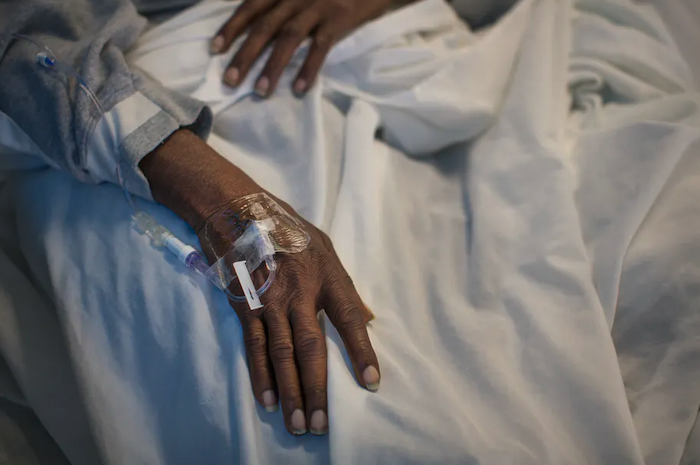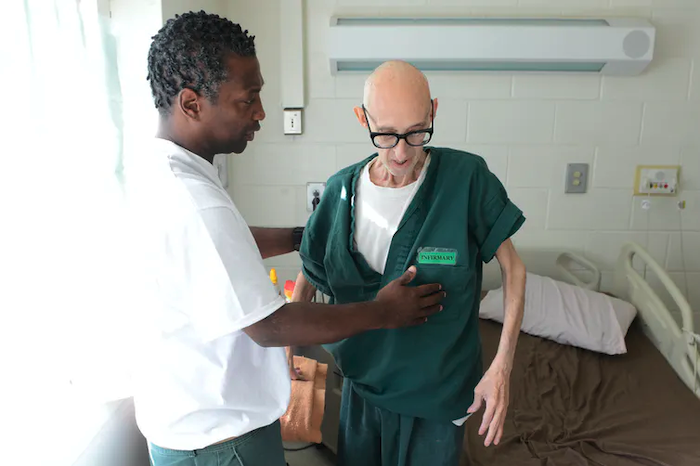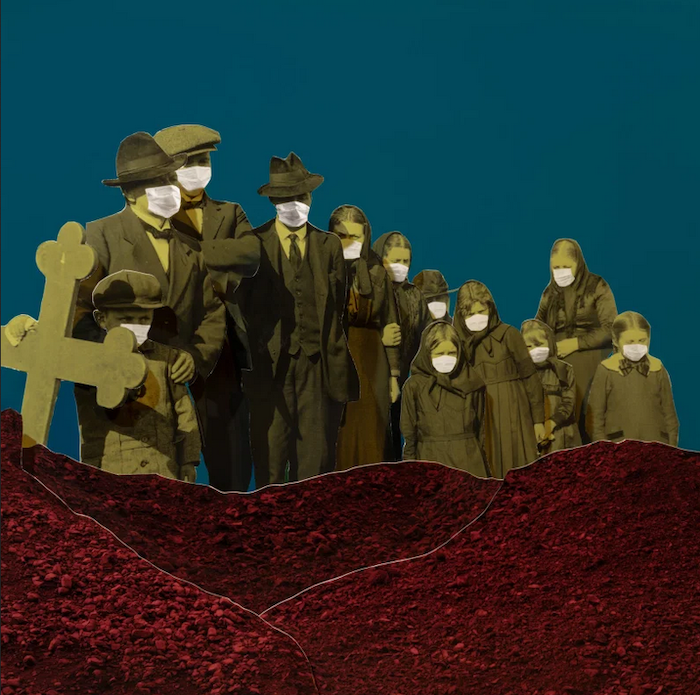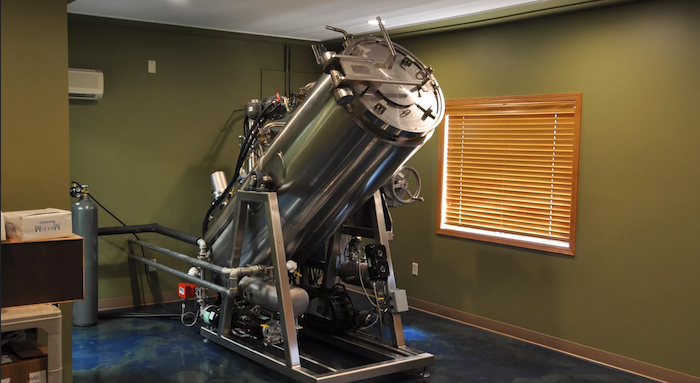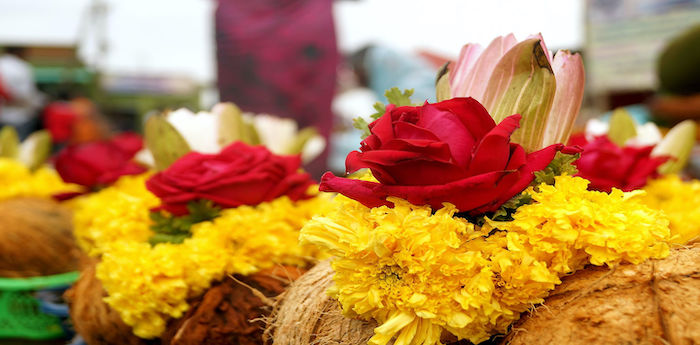
Amy Wright Glenn’s outgoing voicemail message reminds me of a guided meditation app. “Before you leave your message, inhale [long pause] and exhale [another pause]… Thank you so much,” she says in a soothing tone.
There’s a reason she’s so intentional about what callers hear when she can’t answer her phone. Many of the people trying to get in touch with Glenn are in crisis. As an end-of-life doula, she talks to people who are close to death, or who have loved ones who have recently passed away.
Not surprisingly, more and more people have been reaching out to the Florida resident during the coronavirus pandemic, which has taken 294,025 lives worldwide, more than 80,000 of which have occurred in the U.S.
Most people associate doulas with childbirth. Birth doulas are trained to provide emotional and physical support to a parent-to-be during labor. (They don’t deliver babies; that’s a midwife.) But the term “doula” can be used to describe someone who acts as an intermediary through any stage of life. There are sleep doulas, postpartum doulas, antepartum doulas. And, of course, there are death doulas.
Before coronavirus, end-of-life doulas were tasked with carrying out the wishes of people who knew they’d be passing on. If someone wanted a specific song playing as they died, or a certain person at their bedside, the doula would help arrange it. They might also work with the deceased’s family as they planned the funeral, says Henry Fersko-Weiss, the cofounder of the International End of Life Doula Association.
But during the pandemic, end-of-life doulas can’t do their jobs in the same way. Due to social distancing measures, they’re not allowed in hospitals, hospices, and senior living facilities. It may be difficult to provide their services virtually. Some sick people only have limited “phone time,” and they’re using that to call family members, not doulas, Fersko-Weiss says. Funeral services are being put on hold, or are heavily restricted.
Still, people are finding ways to reach out. Often, the people seeking support from end-of-life doulas right now are in immense pain. “The most difficult consultations I’ve had recently have to do with suicide, and the sorrow of those who’ve had family members or friends die by suicide,” Glenn says. “For some who already had mental health struggles, this pandemic was a tipping point… I‘ve cried about that.”
The Unique Pain Of Grieving During COVID-19
One of the reasons this pandemic has been so devastating is that people are dying alone. In Japan, they refer to this as “kodokushi,” which translates to “lonely death.” Many patients in hospitals, hospices, nursing homes, and other healthcare facilities are not being allowed visitors because COVID-19 is so contagious. Their last conversations with their loved ones may take place over FaceTime.
Bridging that distance is not easy, though end-of-life doulas are trying their best to help. Fersko-Weiss says that many doulas are encouraging their clients to write letters to family members. People who are close to death have a unique perspective, which makes the wisdom they impart especially impactful, he says. When possible, Glenn suggests terminally ill patients ask their doctors about going home, where they can be surrounded by loved ones as they pass. “Being with someone as they die is very powerful,” she says. “It’s one of those life-changing memories.”
The experience of grieving alongside so many others can pose a challenge as well. “I don’t think it helps people to know they’re not alone,” Fersko-Weiss says. “It may make you feel better, very briefly, to know there are other people who might be suffering more than you are. But your grief is your grief, and you can’t escape it. And you may feel it more deeply because of everything else we’re losing — on top of the death of a loved one, maybe you lost your job and can’t go back to work, and you also feel like you can’t ever get back to the way things were.”
On some level, that’s often true. “For any grief, whether it’s related to COVID or heart disease or cancer, we never go back to who we were before,” Glenn says. “The experience can deepen us; we can get through it and grow. But the fact that it will change us is irrevocable.”
How to grieve in a pandemic
When asked whether she has any suggestions for people who have lost loved ones recently, Glenn offers this advice: lean in. Open yourself fully to the pain of mourning.
“Grief doesn’t need to be fixed,” she says. Glenn discourages the people she counsels from thinking of grief as an illness that needs to be cured. Instead, it’s more like a scar: It will change and fade, but it will likely be with you forever. The goal is not to erase it, but to grow accustomed to it and find ways to live with it. “Grief is woven into our world,” she says. “The work of grief is to mourn, to express, to share our stories, feelings, and find our way to our own meaning of what love, life, and loss are.”
Kinship is essential, Glenn adds. She says during the initial mourning period, people need to express their internal sense of loss.
But funerals, traditionally a time that friends and families could gather to grieve together, are being canceled and postponed due to social distancing restrictions. This can compound the burden of grief.
“There have been four deaths in my family where we never had a funeral,” says Caroline Caruso, who first learned about death doulas from a friend. She was inspired by her experiences during the pandemic to train as one herself. “The ritual of the funeral is getting robbed from the family, and it’s devastating to the collective,” she notes.
Right now, then, people must be more intentional about finding companionship. They can call or video-chat friends and family. Or get creative: “You could hold a vigil every day at 2 p.m. Use the time to sit in meditation or prayer or song, and ask friends and family to do the same — even if you’re not in the same physical space,” Glenn suggests. “It’s about knowing that your grief is being shared.” Fersko-Weiss also suggests working with a doula, a therapist, or a grief counselor virtually.
Your conversations with friends and loved ones can revolve around your grief and the departed, but they don’t have to. Reconnect to things that have traditionally made you feel good, whether that’s cooking, working out, or watching a funny movie with your best friends on Netflix Party.
You’ll have good and bad days. Over time, those painful, confusing, overwhelming early stages of grief will pass.
“Yes, my work involves holding space for sorrow, but it also involves holding space for hope and courage and resilience,” Glenn says. “When I listen to someone describe their mourning, it isn’t only sorrow I’m hearing about. It’s love. It’s an incredible honor to listen to someone express their love. And express their stories and hopes and fears. Grief is the window into the human soul.”
She adds: “Like birth and death, grief and love can’t exist without each other.”
Complete Article ↪HERE↩!

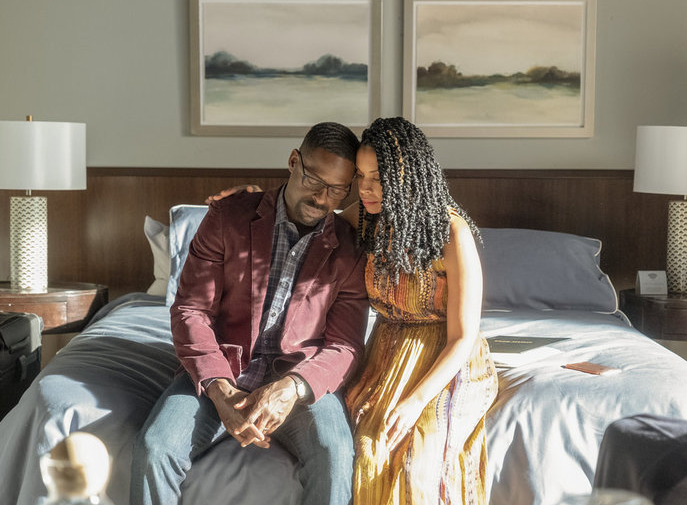
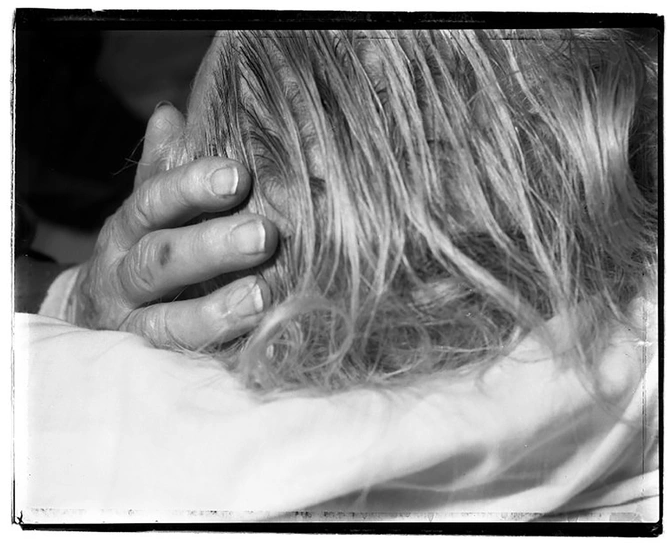
/media/img/posts/2020/06/rule_3/original.png)
